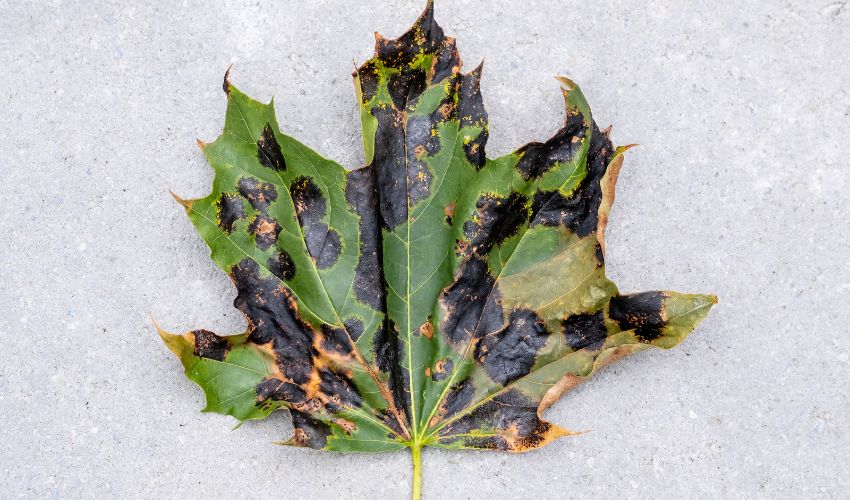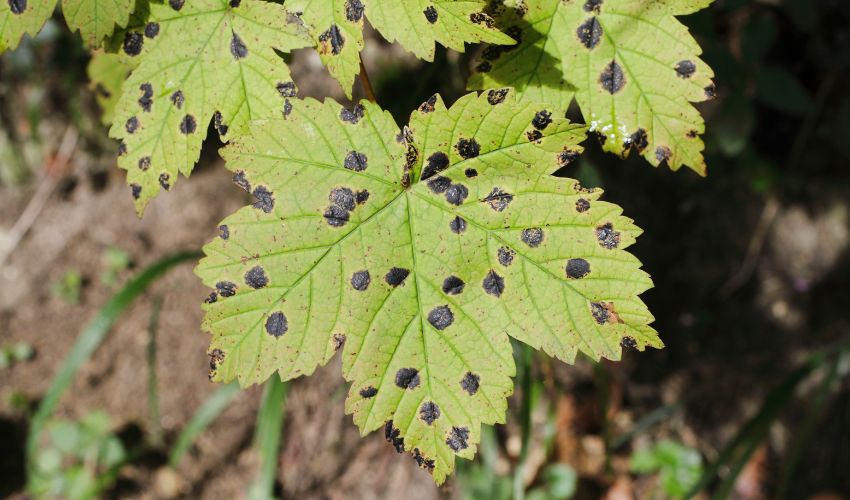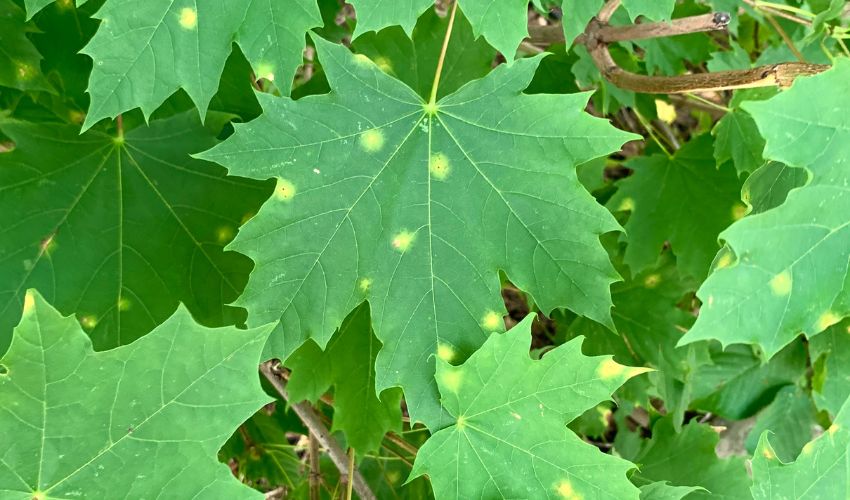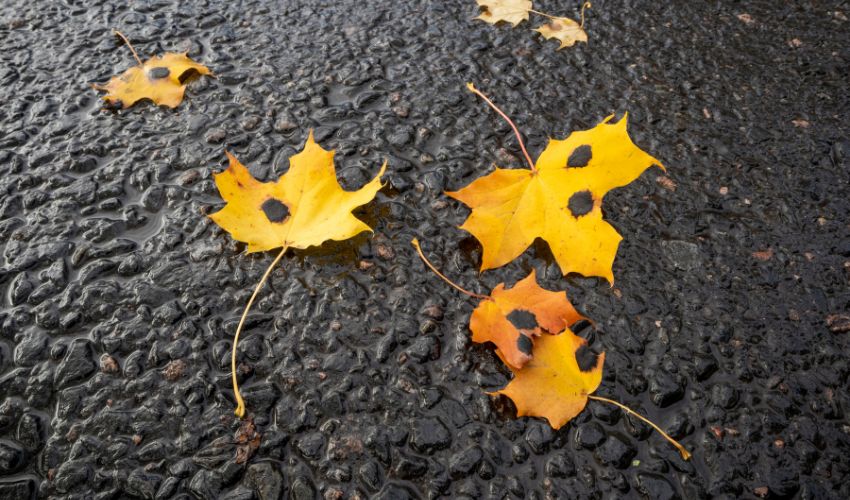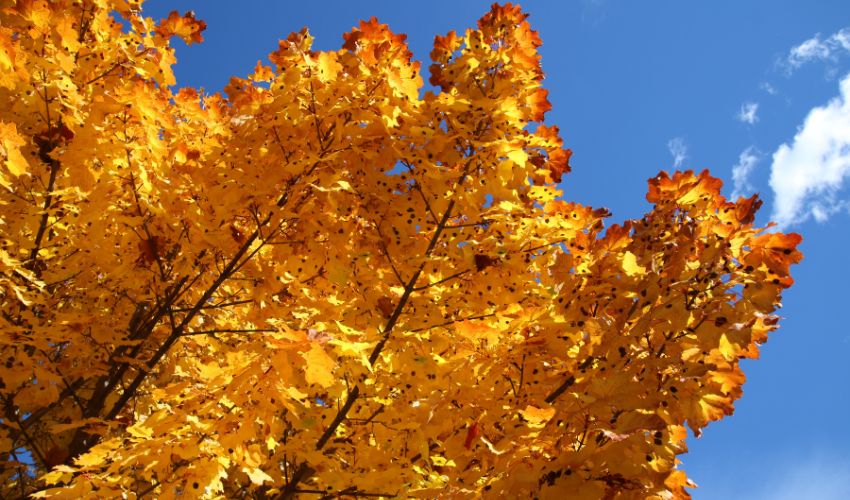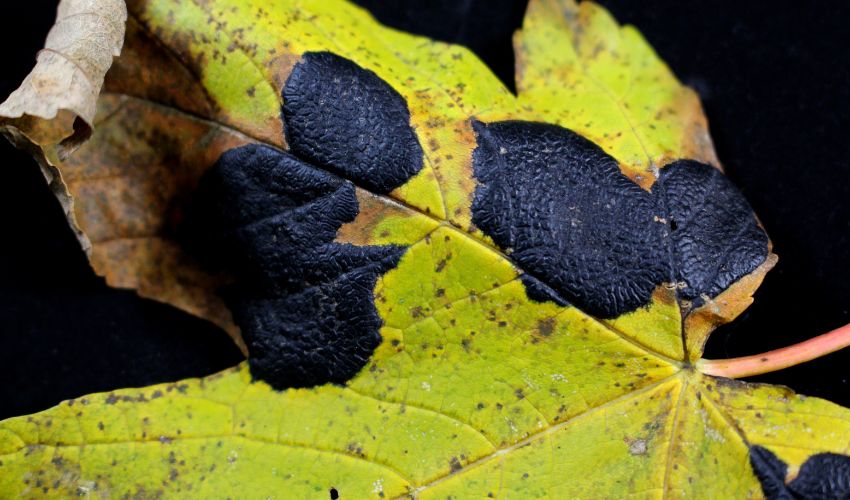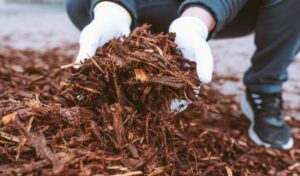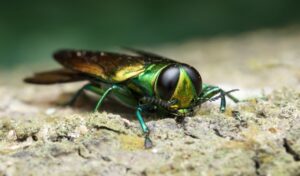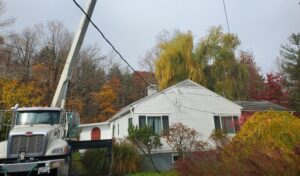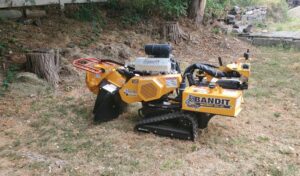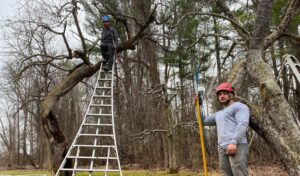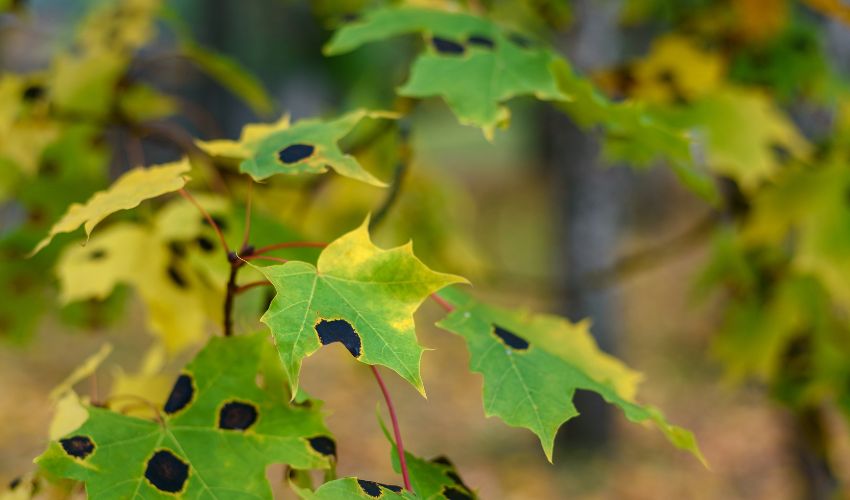
Maples are one of the most easily recognized types of trees, thanks to their beautifully shaped leaves, brilliant fall colors, and varieties that thrive in many conditions.
However, when something mars the beautiful maple leaves, it can be disconcerting for property owners. Here at Hill Treekeepers, we’ve heard from many New York homeowners who are concerned when they notice black spots on their maple leaves.
The spotted leaves are often due to a common issue called maple tar spot. In this article, we’ll explain what maple tar spot is, when it should be a concern, and what you can do to prevent it.
What is Maple Tar Spot?
Maple tar spot is the name given to the round black dots that appear on various types of maple leaves. The name “maple tar spot” is appropriate because it can look like black tar was dripped onto the leaves, causing round spots.
Maple tar spot is caused by a fungus (actually, several different fungi) in the genus Rhytisma. The spots appear on the top of the leaf rather than the underside and are often raised.
The three fungi that cause maple tar spots are Rhytisma acerinum, R. americanum, and R. punctatum.
Which Maple Trees are Susceptible to Maple Tar Spot?
Maple tar spots can appear on any type of maple tree. However, it is most often seen on:
- Norway maples
- Silver maples
- Red maples
- Sugar maples
The same fungus can also appear on the leaves of boxelder trees, willows, hollies, and tulip trees.
When Do Maple Tar Spot Signs Appear?
The first signs that your maple may be infected by Rhytisma fungi usually occur in the middle of summer, around mid-June, when small pale yellow spots may begin to emerge on the leaves. These light dots can be difficult to discern or notice.
However, the spots become darker and larger throughout the summer until they are black by July or August.
The size of the spots can vary depending on the type of fungi that is causing the tar spots. Some become large blotches, while others can be described as “speckled.”
How Does Maple Tar Spot Spread?
The fungus that causes maple tar spots is easily spread by fallen leaves. Specifically, the infected leaves fall to the ground in the fall (sometimes sooner, if the infection is severe), spend the winter on the ground, and then the fungal tissues on the leaves open and release spores in the spring, infecting any newly emerging leaves nearby. Winds are even capable of carrying spores to other trees.
This means that if any maple trees on neighboring properties have infected leaves, your trees can easily become infected if the leaves are not removed in the fall.
Will Maple Tar Spot Kill My Tree?
The maple tar spot looks a lot worse than it is. Though it is a fungal disease, most trees only suffer cosmetic damage. If the infection is severe, the tree may drop its leaves earlier than usual – this is called “early leaf drop.”
Thankfully, maple tar spot is one of the least harmful tree diseases. In some instances, maple tar spot can be accompanied by other fungal issues, such as anthracnose, which can be more serious.
Maple tar spot by itself, however, will not seriously harm your tree.
How Can I Control Maple Tar Spot?
If you notice black spots on your maple leaves, be prepared for a lot of raking when the leaves drop. The infected leaves will need to be gathered and destroyed or, at the least, removed from the property. Be sure to bag up and remove, chop up, compost, or destroy all the leaves in the fall. If you wait until spring, the spores may have already spread.
Some fungicide applications may also be helpful if your trees have more maple tar spots than you can deal with. Contact Hill Treekeepers for more information.
Most fungal issues are caused by excess moisture, so you may notice more maple tar spots during years when your tree received more water than years when it did not.
For instance, upstate New York had a lot of rain in the spring of 2017, so property owners noticed more maple tar spots on their trees that year.
In general, maple tar spot is a fungal disease that can harm your tree’s looks but won’t do much damage to the health of your tree. Collect the leaves when they fall to prevent the fungal spores from spreading the following year.
Concerned About Your Tree Health?
If your trees are showing signs of distress, or if you aren’t sure that maple tar spot is the issue impacting your maple trees, contact Hill Treekeepers to schedule an inspection.
For more information on maple tar spot, check out the Cornell University College of Agriculture and Life Sciences fact sheet on Tar Spot of Maple.
Remember, the best way to care for your trees’ health is to prevent any issues. Contact Hill Treekeepers to learn how we can help you prevent many tree pests and diseases through our insect pest and tree disease programs.
Share this online!
Get the highest quality of tree services for residential and commercial properties in the Hudson Valley area. We look forward to working with you!
TOPICS
Recent Articles
Don't Miss the Next Update!
Join the thousands of smart Hudson Valley residents who get the monthly newsletter from Hill Treekeepers. It's full of helpful information you won't want to miss!

